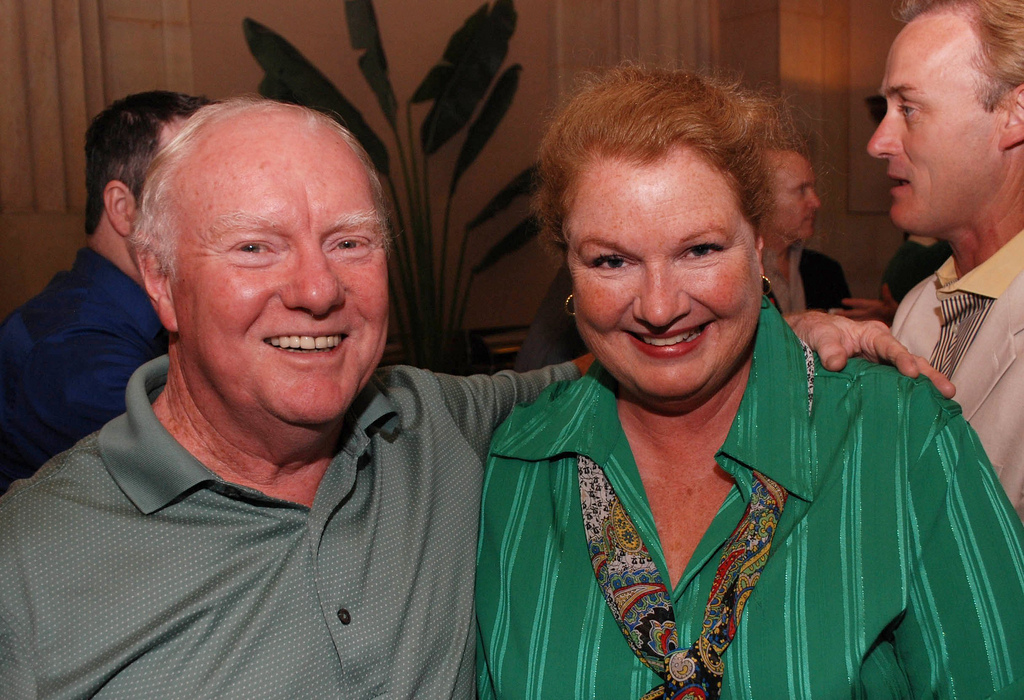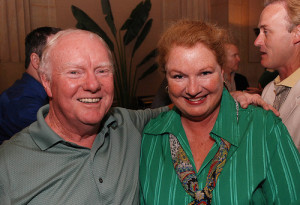It was 1972. Marybeth Phillips was 14, a student at a small Catholic school, St. Leonard’s Academy at 39th and Chestnut on the Penn Campus. And thanks to two classmates who shared her love for Irish dance, something entirely unexpected happened.
She became Miss Mayo—tiara, sash, roses and all.
“I had two really good friends, both of them seniors, when I was at St. Leonard’s. They got wind of the fact that I was an Irish dancer,” explained Phillips, originally from 48th and Springfield in Southwest Philadelphia, now an actor, writer, music consultant and events producer living in Chester County—and part of the year in Ireland.
“Maureen Cavanaugh was active in the Mayo Association of Philadelphia, and Marian Gallagher was also very active in the Irish community. Both of these girls were step dancers. When I met them at St. Leonard’s, those two girls got me a dance part in the school show. Freshmen didn’t get to be in the show, but they lobbied for me. They said ‘Irish dancers are the best dancers, you’re gonna get a part.’ Of course, we were friends after that.”
Irish friends being Irish friends, Maureen and Marian invited Phillips to tag along on their jaunts—including the Mayo Ball, sponsored by the Mayo Association of Philadelphia. Phillips had never gone, but it appealed to her.
“‘You’re coming with us, you gotta go,’ they said. Well, it was black tie and gowns. I’d go anywhere where I could get dressed up.”
Phillips had a great time, but she thought that was all there was to it—until Maureen and Marian urged her to run for Miss Mayo, something that never would have occurred to her.
“I didn’t know what I was doing,” Phillips laughed, but that didn’t stop her. Once again, the prospect of wearing a gown had its undeniable allure, and Phillips thought she had nothing to lose.
She remembers the night as if it was yesterday. “The first part of the night, we hung around with friends and did the ceili dances, giggling and having fun. Then they pulled us into the dining room and interviewed us. It was a little nerve wracking. Billy Brennan was one of the judges, and he asked me what I knew about Ireland. How many counties were there.
“It was 1973, when Dennis Clark had just written ‘The Irish in Philadelphia.’ That was the beginning of my collection of Irish books. And I’d absorbed a lot of the culture from my grandparents and neighbors. (Grandmother Bridget Coyne was from Clonbur, Galway, and grandfather, Tom Ward, was from Tuam, also in the county.) My neighborhood had an overwhelming Irish character to it. You didn’t know anybody whose grandparents weren’t from Ireland.
“Anyway, Billy asked my how many counties Ireland had. I said 28. I just didn’t remember. I’m sure I knew. I don’t remember any of the other questions. But they’d generally ask you about things you liked to do. It was never ‘what’s your plan to save the world.’ They were looking for poise. They were looking for girls who were well-spoken. Do they have a lot of heart and soul? Do they knock themselves out for people? That kind of thing. They wanted to make sure you weren’t snapping gum or twirling your hair. They wanted someone friendly and outgoing and, ideally, knowledgeable about the Irish and who cherished Irish traditions.”
Ultimately, despite the wrong answer, that proved to be Marybeth Phillips. And no one could have been more, as they say in the Irish tradition, gobsmacked.
“I was so surprised. I just thought: Now what do I have to say?”
Today, winners of local Irish contests, such as Miss Mayo, Mary from Dungloe and the Rose of Tralee, collect some nice prizes, including Waterford punch bowls, fancy jewelry, a large check, or a trip to Ireland.
Back then, it was a tiara, a sash and roses. And that was just fine. Especially the roses, Phillips said. “I was over the moon about those.”
She still has the tiara.
A year later, Phillips won the Philadelphia Donegal Association’s Mary from Dungloe pageant. That meant a trip to Ireland for the big international contest, where she came in third. But Miss Mayo was really the beginning of a lasting and significant relationship with Philadelphia’s Irish community, and with Irish culture. Becoming Miss Mayo made a big difference.
“It made me feel validated. Just all of those little layers of Positive reinforcement kept me involved. I took being Miss Mayo seriously. They like you to represent them, and they want you to continue on with your Irish interests.”
And Phillips did just that. She went on to teach Irish dance. She formed a Celtic dance troupe. She wrote a monthly column, “Putting on Airs,” for the Irish Edition. She joined the Philadelphia Ceili Group, and now serves on its board. She owns a home in Cortoon, Ballinrobe—in County Mayo, appropriately—just across Lough Mask from her granny’s farmland.And all of that is just scratching the surface.
Years later, the Mayo Association is still recruiting accomplished young women to represent them in the Irish community and beyond. As tough as the competition was in 1972, the competition seems tougher today.
“These kids started out in day care prepping for Harvard,” Phillips said. “They’re scary smart. They’re so accomplished, and so young.”
But one more distinction awaits the next Miss Mayo—she’ll be the 50th.
For that special occasion, the Mayo Association is hoping for a reunion of as many former Miss Mayos as they can round up. That’s Marybeth Phillips’ job. And it’s a tough one, but she’s staying positive.
“It’s hard. A lot of them are people who did not stay involved. So far there are something like six of us. If there are only 10 girls who enter the contests this year, and there are 10 of us, that’d be pretty good.”
The ball is on Saturday November 2, from 8 p.m. until the cows come home, at the Philadelphia Irish Center/Commodore Barry Club. Details here.
And you can learn about all of the Miss Mayos here.


